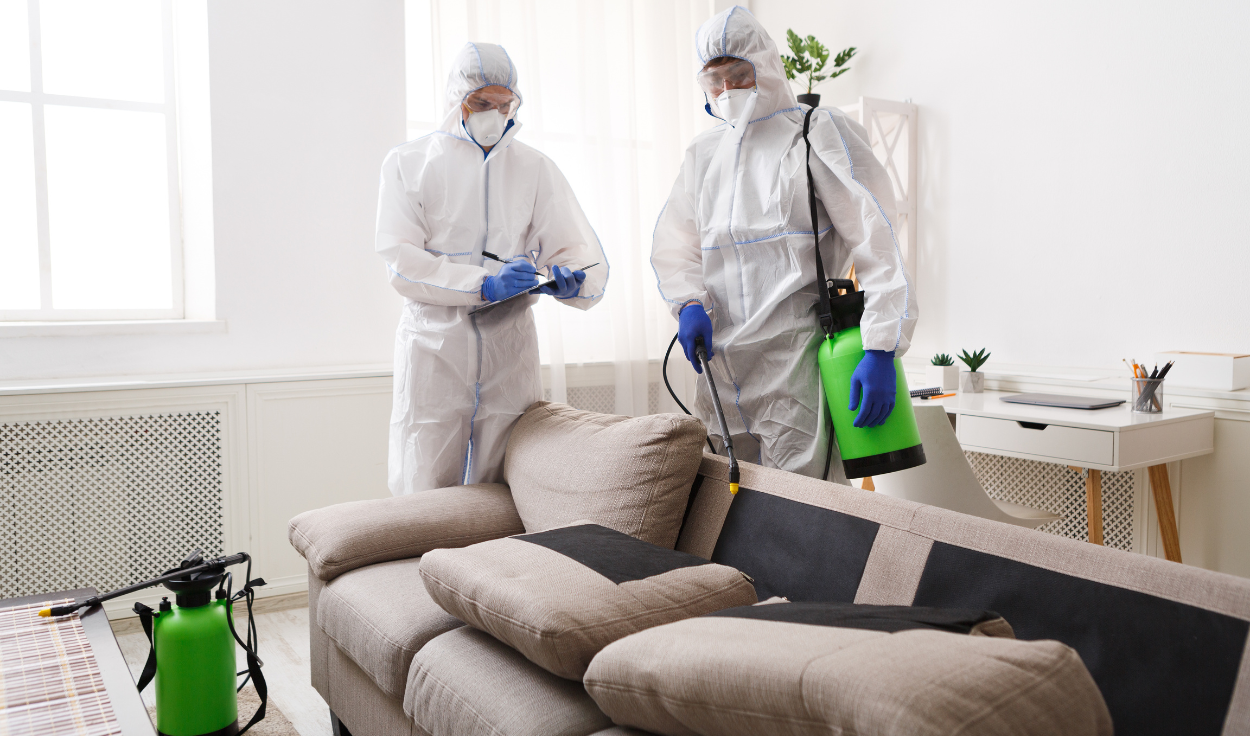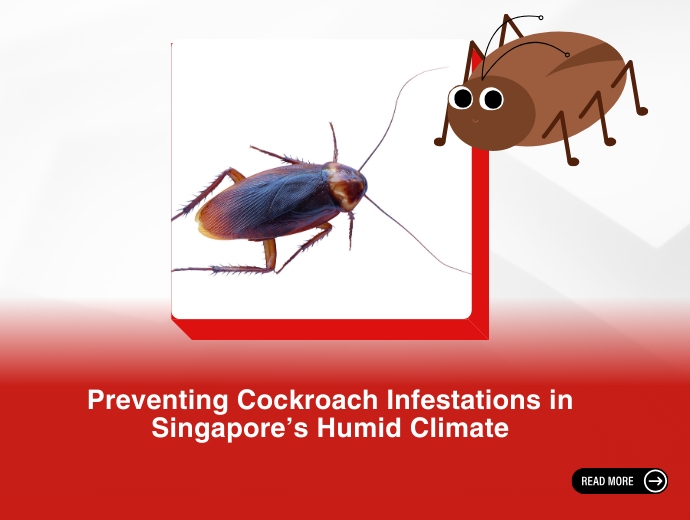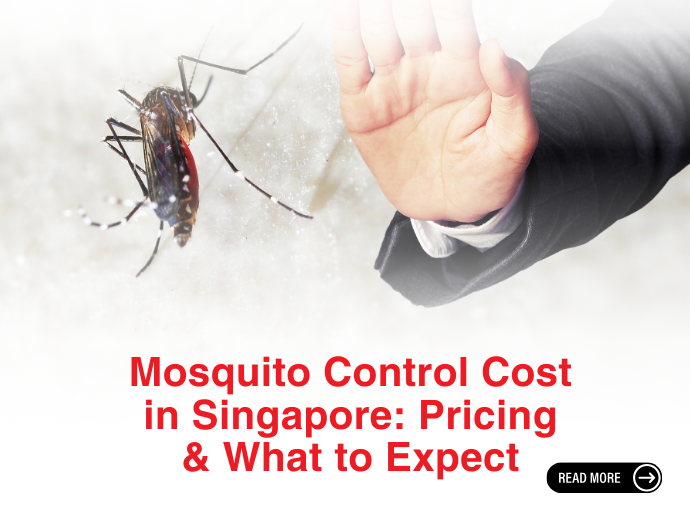In the modern world, the challenge of pest infestations in high-rise buildings has become increasingly prevalent, but what sets Singapore's skyline apart is its unique perspective when it comes to tackling this issue. In this article, we will delve into the strategies and approaches that showcase our city-state's commitment to preventive measures which have resulted in significant success in managing and preventing pest infestations.
Understanding Common Pest Infestations in High-Rise Buildings
A good first step towards understanding pest control in high-rise buildings is to identify the most prevalent pests in urban environments.
Cockroaches: These resilient creatures are a common nuisance in high-rise buildings due to their ability to thrive in small, dark spaces and their affinity for warm environments.
Rats and Rodents: These rodents can cause damage to property and spread diseases, making them a significant concern for high-rise buildings.
Bed Bugs: Infamous for their bites, these small insects have become a growing problem for residents in multi-story buildings, as they easily hitchhike on clothes and furniture.
Ants: Ants, attracted by food sources, can form large colonies within high-rise buildings, making them difficult to eradicate once established.
Examining the factors that attract pests to high-rises
Food sources: The abundance of food waste in high-rise buildings serves as a compelling attractant for pests.
Shelter and nesting grounds: Pests, seeking refuge from the elements, often find ideal nesting grounds within the structure of high-rise buildings.
Easy access points: Cracks, gaps, and poorly maintained infrastructure provide ideal entry points for pests to invade high-rises.
Analysing Singapore's Approach to Pest Management
Singapore's success in combating pest infestations can be attributed to a combination of stringent regulations, proactive government initiatives, and vigilant building management practices.
Relevant regulations and guidelines governing pest control in Singapore
Singapore has established a comprehensive framework of regulations, including the National Environmental Agency's Code of Practice, that outlines the requirements for effective pest management in high-rise buildings. These guidelines ensure that building owners and managers prioritise preventive measures and engage qualified pest control professionals in Singapore.
Pest control initiatives implemented by the government and building management
Singapore's government collaborates closely with building management to develop pest control programmes tailored to each high-rise building's unique needs. These initiatives involve regular inspections, timely maintenance, and targeted treatments to ensure ongoing pest prevention and control.
Integrated Pest Management (IPM) Strategies
Integrated Pest Management (IPM) serves as a comprehensive approach to pest management, focusing on prevention, monitoring, and effective control measures that are environmentally friendly.
Assessing the effectiveness of IPM in high-rise buildings
The adoption of IPM strategies by high-rise buildings in Singapore has proven highly effective in minimising pest infestations. By combining various methods, such as regular inspections and monitoring, effective sanitation practices, and the use of physical barriers and exclusion techniques, IPM has notably reduced reliance on chemical pesticides.
Components of a successful IPM strategy in skyscrapers
Regular inspections and monitoring: A proactive approach, including periodic inspections and constant monitoring, helps identify pest-related issues early on, allowing for swift intervention.
Effective sanitation practices: Maintaining cleanliness within high-rise buildings is paramount in deterring pests, as it deprives them of readily available food sources.
Physical barriers and exclusion techniques: Through the use of physical barriers, such as sealing cracks and spaces, pests are denied entry and nesting opportunities within the building.
Introduction to technology-based pest control solutions
In recent years, technology has played a pivotal role in enhancing pest control efforts in Singapore. From artificial intelligence-based monitoring systems to smart sensors, these innovations aid in early detection and rapid response to pest activities.
RATSENSE® Rodent Surveillance System
Role of Data-driven and smart sensors in monitoring pest activities
Data-driven information, coupled with smart sensors, has the capability to continuously monitor and analyse environmental conditions within buildings. By detecting unusual pest behaviour or environmental changes associated with infestations, these systems alert pest control professionals promptly.
3+1 Mosquito Management Programme
Environmental Considerations in Pest Management
While ensuring effective pest control, it is crucial to strike a balance between pest management and ecological sustainability.
Balancing pest control with ecological sustainability
Recognizing the importance of preserving ecosystems, Singapore promotes the use of environmentally friendly pest control alternatives that minimise harm to non-target organisms and ecosystems.
Biological control methods: Employing natural predators or bacteria specific to the pest species can help control infestations without resorting to chemical pesticides.
Non-toxic baiting and trapping: Using non-toxic baits and traps can effectively reduce pest populations while posing minimal risks to the environment.
ECO-FRIENDLY INITIATIVES
Case Studies: Successful Pest Control Programmes in Singapore
Several notable high-rise buildings in Singapore have implemented exemplary pest management strategies, showcasing the effectiveness of preventive measures, regular inspections, and community involvement.
Case Study : Dengue Prevention in Singapore
Overview: Dengue fever, transmitted by the Aedes mosquito, has been a significant concern for Singapore due to its tropical climate.
Approach: The National Environment Agency (NEA) launched the "Do the Mozzie Wipeout" campaign, focusing on educating the public about the importance of removing stagnant water. They used social media campaigns, school programmes, and community involvement to drive their message.
Outcome: Significant decreases in dengue cases have been observed since the campaign's inception. Regular inspections and immediate actions on breeding hotspots have also helped keep numbers low.
Lessons Learned: Continuous public education and involvement, combined with strict enforcement and monitoring, can lead to the successful control of mosquito-borne diseases.
Emerging technologies and trends shaping the future of pest management
The integration of advanced technologies, such as drones for pest surveillance and genetic engineering for pest sterilisation, promises to revolutionise pest control in high-rise buildings.
Wolbachia-Aedes Mosquito Suppression Strategy
Summary
Preventing pest infestations in high-rise buildings necessitates a multifaceted approach that combines effective pest management strategies, community involvement, and advanced technologies. By adopting integrated pest management strategies, educating residents, and learning from successful case studies, high-rise buildings can become impenetrable fortresses against pests.
Frequently Asked Questions (FAQs)
- Can pests from adjacent buildings infiltrate high-rises?
Pests can indeed infiltrate adjacent buildings due to their ability to crawl through cracks and gaps. Effective pest control measures should be implemented consistently throughout neighbouring buildings to minimise infestation risks.
- How often should a high-rise building undergo pest inspections?
High-rise buildings should undergo regular pest inspections at least once every three months, or more frequently if necessary. This frequency ensures prompt detection and timely intervention.
- Are there any natural or organic pest control methods available?
Yes, natural and organic pest control methods are available and encouraged in Singapore. Biological control methods and non-toxic baiting and trapping offer environmentally friendly alternatives to chemical pesticides.
- What are the legal obligations of building management regarding pest control?
Building management in Singapore is legally obligated to comply with the National Environmental Agency's Code of Practice. This includes implementing effective pest control measures and engaging qualified professionals.
- How can residents contribute to pest prevention efforts?
Residents can contribute to pest prevention efforts by practising proper waste management, maintaining cleanliness, and reporting any signs of pest sightings or infestations to building management promptly.
- What are the potential risks associated with pesticide use in high-rise buildings?
The potential risks associated with pesticide use include environmental contamination, health hazards, and unintended harm to non-target organisms. Careful selection, application, and adherence to safety guidelines are essential in minimising these risks.
Conclusion:
The shimmer of Singapore's skyline isn't just due to its glass-clad towers but also its relentless spirit. A spirit that says, "Not today, pests!" With innovation at the forefront, Singapore’s high-rises stand tall, not just in height but in resilience.


.png)
